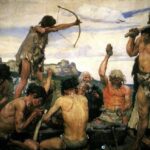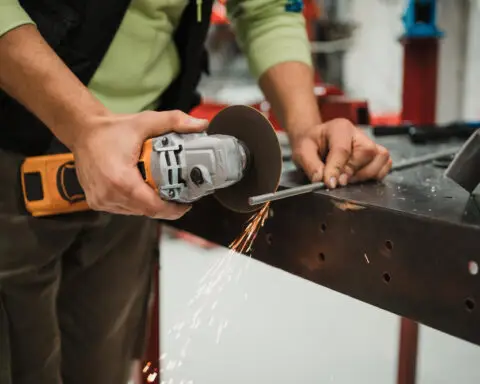Discover the lesser-known stories and intriguing mysteries behind one of America’s most iconic landmarks, Mount Rushmore. Nestled in the Black Hills of South Dakota, this colossal monument is not just a testament to American history but also a treasure trove of secrets waiting to be explored. From the visionary artists and brave workers who brought it to life to the hidden chambers and controversial histories it holds, ‘Secret Facts About Mount Rushmore‘ delves deep into the untold narratives that make this monument a fascinating subject for historians, tourists, and culture enthusiasts alike. Join us as we uncover the hidden layers and remarkable tales of Mount Rushmore, revealing aspects of this national treasure that go beyond the carved faces of the four presidents.
Secret Facts About Mount Rushmore
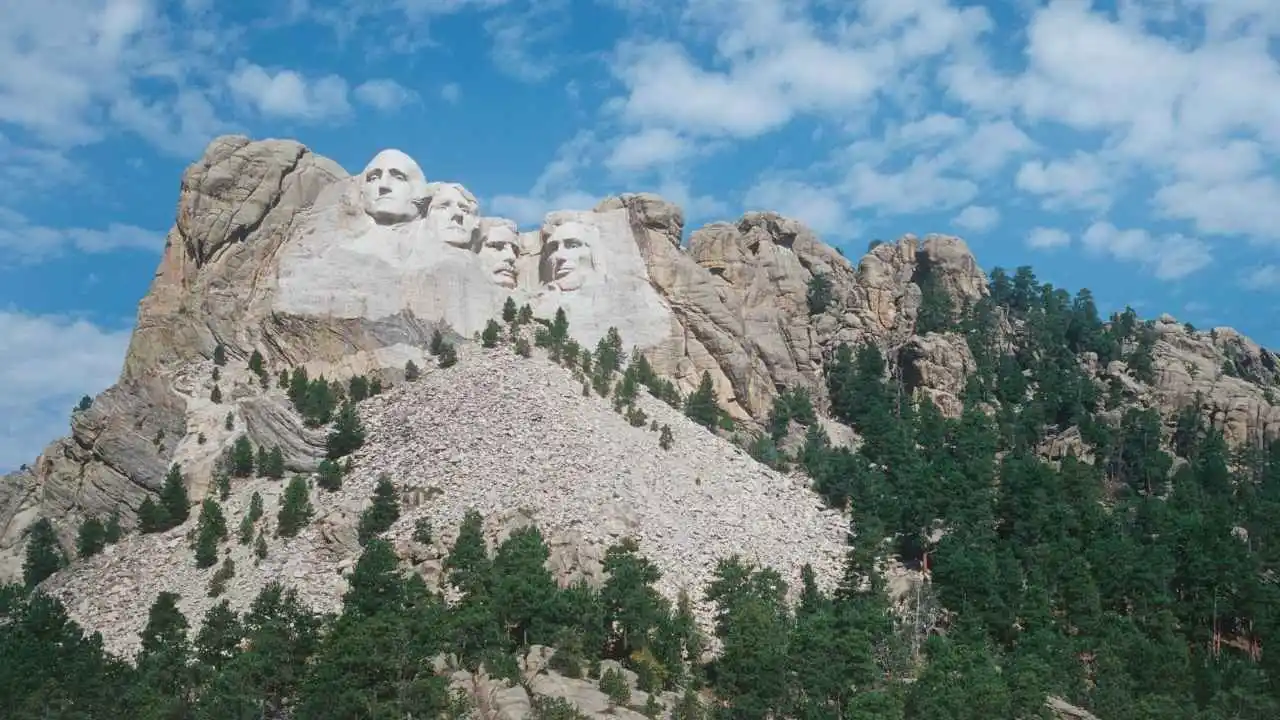
The Original Concept and Its Evolution
- Conception by Doane Robinson: The idea for Mount Rushmore was first proposed in 1923 by Doane Robinson, a historian for the state of South Dakota. Robinson’s initial vision was not to feature the faces of presidents but to commemorate heroes of the American West, such as Lewis and Clark, Red Cloud, and Buffalo Bill Cody. His primary aim was to create a monument so grand that it would draw tourists from all over to South Dakota.
- Evolution of the Concept: The concept evolved significantly from Robinson’s original idea. When Gutzon Borglum, the sculptor who was eventually commissioned for the project, was brought into the picture, he shifted the focus. Borglum proposed that the monument should feature the heads of four presidents, believing that a monument to the nation’s founding and expansion would have greater national appeal and significance.
- Selection of Presidents: The four presidents chosen were George Washington, Thomas Jefferson, Theodore Roosevelt, and Abraham Lincoln. Each was selected for their specific contributions to the United States: Washington for the nation’s birth, Jefferson for the expansion through the Louisiana Purchase, Roosevelt for the development of the nation, and Lincoln for the preservation of the union and the principles of democracy.
- Borglum’s Vision and Artistic Direction: Borglum’s artistic vision was monumental and ambitious. He intended the sculpture not only as a work of art but also as a message to future generations about the importance of these four presidents in American history.
- Changes During Construction: The original design underwent changes during the construction process. Financial constraints, the nature of the granite, and unforeseen technical difficulties led to modifications in the size and positioning of the sculptures.
- Completion and Legacy: The project, which started in 1927, was completed in 1941. Although Borglum died before its completion, his son, Lincoln Borglum, continued the work. The monument has since become a symbol of American history and democracy, attracting millions of visitors each year.
The Selection of the Four Presidents

The selection of the four presidents for Mount Rushmore was a deliberate choice by the sculptor Gutzon Borglum, each chosen for their significant contributions to the United States. Here’s an exploration of the reasons behind each selection and any related controversies:
- George Washington: As the first President of the United States, George Washington was chosen to represent the birth of the United States. He is revered as a pivotal figure in the nation’s founding and for setting many precedents in the early years of the Republic.
- Thomas Jefferson: Jefferson was selected for his role in the expansion of the United States, primarily through the Louisiana Purchase. As the third President and the principal author of the Declaration of Independence, Jefferson’s inclusion symbolizes the growth of the nation and its democratic ideals.
- Theodore Roosevelt: Chosen for his contributions to the development of the United States, Theodore Roosevelt is known for his progressive policies and leadership during a time of rapid economic growth. His presidency is often associated with the construction of the Panama Canal and his role in the conservation movement.
- Abraham Lincoln: Lincoln, the 16th President, was chosen to represent the preservation of the United States, particularly for his leadership during the Civil War and his efforts in abolishing slavery. His inclusion symbolizes the nation’s commitment to equality and unity.
Controversies and Discussions:
- Artistic Perspective: The selection of these four presidents was largely based on Borglum’s perspective of the most important events in U.S. history. This choice reflects his personal interpretation and artistic vision.
- Representation and Diversity: Some critics have pointed out that the selection of these four presidents, while significant, represents a limited perspective on American history. The monument does not acknowledge contributions from women, people of color, or other groups who have played essential roles in the nation’s history.
- Native American Perspectives: The monument has been a source of controversy, especially among Native Americans. The Black Hills, where Mount Rushmore is located, are considered sacred by the Lakota Sioux. The carving of the monument in this region is viewed by many as a desecration of sacred land and a symbol of the broken treaties and mistreatment of Native American tribes by the U.S. government.
The Artist Behind the Sculpture

[contact-form][contact-field label=”Name” type=”name” required=”true” /][contact-field label=”Email” type=”email” required=”true” /][contact-field label=”Website” type=”url” /][contact-field label=”Message” type=”textarea” /][/contact-form]
, the sculptor behind the iconic Mount Rushmore, led a life marked by artistic achievement and controversy. Here’s a detailed look at his life, career, artistic vision, and the challenges he faced:
Early Life and Career
- Birth and Background: Born as John Gutzon de la Mothe Borglum in 1867 in Idaho, Borglum was the son of Danish immigrants. His father, a Mormon polygamist, had two wives, though he later conformed to societal norms.
- Artistic Training: Borglum received training in art both in the United States and Europe. His early works were well-received, showcasing his talent in sculpting and painting.
Artistic Vision
- Large-Scale Works: Borglum was known for his preference for large-scale works. He believed in creating art that was accessible to the public and that could be integrated into the natural landscape.
- Mount Rushmore: His vision for Mount Rushmore was not just to create a monument but to carve something monumental and enduring that would reflect the nation’s history and values.
Notable Works and Achievements
- Before Rushmore: Prior to Mount Rushmore, Borglum had worked on various significant projects, including sculptures for the Cathedral of St. John the Divine in New York and the Stone Mountain project in Georgia.
- Mount Rushmore: This became his most famous work, where he sculpted the 60-foot heads of four U.S. presidents, a project that spanned from 1927 until his death in 1941.
Controversies and Challenges
- Association with the Ku Klux Klan: Borglum’s involvement with the Ku Klux Klan has been a significant controversy. His association with the Klan was particularly noted during his work on the Confederate memorial at Stone Mountain, which he later abandoned.
- Personality and Disputes: Known for his fiery personality, Borglum often found himself in disputes with patrons, workers, and government officials. His strong opinions and temper led to various professional and personal conflicts.
- Artistic Conflicts: Borglum faced challenges in his artistic endeavors, often clashing with committees and funders over his creative vision and the scale of his projects.
Legacy
- Despite the controversies, Borglum’s legacy is largely defined by his monumental contribution to American public art, particularly through Mount Rushmore, which remains a symbol of American history and ingenuity.
The Hidden Chamber
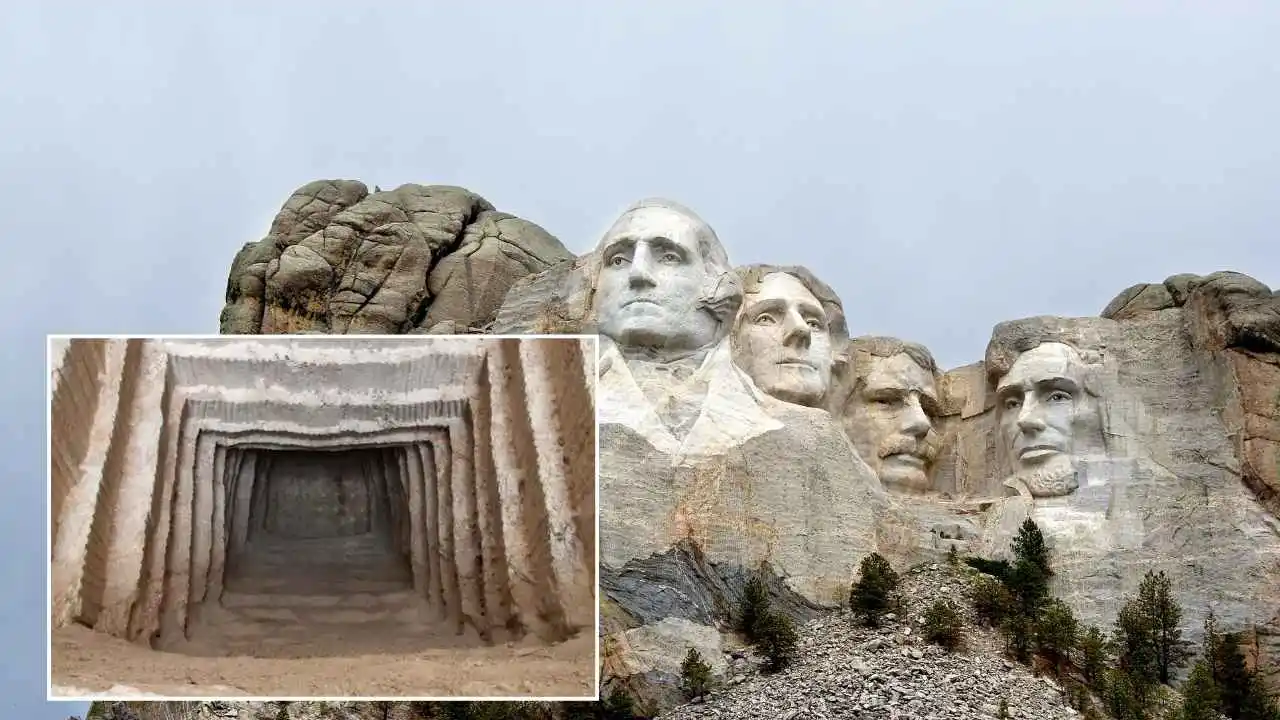
The Hall of Records at Mount Rushmore is a lesser-known aspect of the monument, envisioned by the sculptor Gutzon Borglum as a repository for America’s most important documents. Here’s a detailed look at this hidden chamber:
Concept and Vision
- Borglum’s Idea: Gutzon Borglum conceived the Hall of Records as a grand chamber behind the faces carved into Mount Rushmore. His vision was to create a space that would house significant documents and artifacts central to American democratic history.
- Purpose: The purpose of the Hall of Records was to ensure that even if the meanings of the presidential faces were lost to future generations, there would be a way to understand the history and significance of the United States.
Design and Location
- Chamber Specifications: The proposed chamber was to be large, measuring approximately 80 by 100 feet. It was planned to be drilled into the north wall of the small canyon located behind the presidential faces.
- Access: An 800-foot granite stairway was intended to lead up to the room, making it accessible for those who wished to view the documents.
Construction and Current State
- Construction Challenges: The construction of the Hall of Records began but was never completed. The onset of World War II and funding issues led to the project being put on hold, and eventually, it was abandoned.
- Current State: Today, the Hall of Records is not a grand chamber as originally envisioned but a small room. It contains a series of porcelain enamel panels that narrate the story of Mount Rushmore, the reasons for the selection of the four presidents, and a brief history of the United States.
Contemporary Significance
- Symbolic Value: The Hall of Records, even in its incomplete state, stands as a symbol of Borglum’s ambition and the broader purpose of Mount Rushmore as a monument to American history and democracy.
- Public Access: The chamber is not accessible to the public, but its story adds an intriguing layer to the history of Mount Rushmore, inviting interest and speculation about what it might have been.
Construction Challenges and Techniques
The construction of Mount Rushmore was a remarkable feat, combining innovative techniques and overcoming significant challenges. Here’s a detailed look at the methods, technologies, and challenges involved in its creation:
Construction Techniques
- Blasting and Drilling: The primary method for carving the presidents’ faces into the granite of Mount Rushmore involved the use of dynamite for blasting large sections of rock. After the initial blasting, workers used jackhammers and hand tools to refine the details.
- Precision Work: To achieve the precise likeness of the presidents, Borglum used a technique called “pointing,” involving the use of a device to measure and scale down the dimensions of models of the presidents’ heads, translating these measurements to the mountain.
- Innovative Tools: The project saw the use of pneumatic hammers and drills, which were relatively new technologies at the time. These tools allowed for more detailed sculpting and finishing work.
Challenges Faced
- Harsh Working Conditions: The workers faced extreme conditions, working at high altitudes with exposure to harsh weather and the dangers of falling rocks.
- Technical Difficulties: The granite of Mount Rushmore presented its own challenges. It was hard and durable, which was ideal for longevity but made the carving process arduous.
- Financial Constraints: Funding was a constant issue. The project relied on federal funding, private donations, and public support, and there were times when the project nearly halted due to lack of funds.
Overcoming Challenges
- Adaptation and Innovation: Borglum and his team adapted their techniques as they encountered different challenges. For instance, they developed a method to measure and mark the mountain to ensure accuracy in the carvings.
- Teamwork and Skill: The project employed skilled miners, rock climbers, and sculptors who brought their expertise to handle the unique challenges of the project.
- Government Support: The project received crucial support from the federal government, particularly from President Calvin Coolidge and later Franklin D. Roosevelt, which helped in securing the necessary funding.
Completion
- The construction of Mount Rushmore began in 1927 and was completed in 1941. Despite the challenges, the monument stands today as a testament to human ingenuity and perseverance.
The Workers and Their Stories
The workers who built Mount Rushmore played a crucial role in the creation of this iconic monument. Their stories, backgrounds, and working conditions offer a fascinating glimpse into the human aspect of this monumental project. Here’s a detailed look:
Backgrounds of the Workers
- Diverse Crew: The workforce consisted of almost 400 men and women from various backgrounds. Many were miners who had come to the Black Hills looking for gold, while others were local farmers, ranchers, and lumberjacks.
- Chief Carver: Luigi Del Bianco, an artisan and stonemason, was the chief carver and played a significant role in bringing Borglum’s vision to life.
Working Conditions
- Challenging Environment: The work was physically demanding and dangerous. Workers had to deal with the harsh weather conditions of South Dakota, the risk of falling rocks, and the use of dynamite and jackhammers on the granite face.
- Innovative Techniques: Despite the risks, the project was known for its innovative techniques. Workers used harnesses and ropes to dangle off the side of the mountain to drill and carve the granite.
Notable Anecdotes
- Precision and Skill: The precision required for the project was immense. Workers often had to use small tools to add fine details, working from models created by Borglum.
- Safety Record: Remarkably, no fatalities occurred during the construction of Mount Rushmore, which is notable given the dangerous nature of the work.
Lifestyle and Community
- Camaraderie: There was a strong sense of camaraderie among the workers. Many formed lasting friendships, united by the unique experience of working on such a monumental project.
- Living Conditions: Workers and their families lived in nearby towns, and the project helped to stimulate the local economy during the Great Depression.
Legacy
- Recognition: The workers’ contributions have been recognized over the years, with plaques and memorials commemorating their hard work and dedication.
- Lasting Impact: The stories of these workers have been passed down, highlighting the human effort behind the creation of Mount Rushmore.
Funding and Political Support

The funding and political support for Mount Rushmore were crucial in its realization, involving a mix of federal involvement, public support, and political maneuvering. Here’s a detailed look:
Initial Funding and Political Support
- Mount Rushmore National Memorial Act: The project received a significant boost when Congress passed the Mount Rushmore National Memorial Act. Signed by President Calvin Coolidge, this act authorized up to $250,000 in matching funds.
- Coolidge’s Involvement: President Coolidge played a key role in securing federal funding for the project. His interest and support were vital in the early stages of the monument’s development.
Ongoing Funding Challenges
- Dependence on Federal Funds: The project was heavily reliant on federal funding. The initial allocation covered only a portion of the total cost, leading to ongoing financial challenges.
- Public Contributions: In addition to federal funds, the project also received contributions from private donors and public fundraising efforts. These efforts were essential in keeping the project afloat during financially difficult times.
Political Maneuvering
- Presidential Support: The project enjoyed support from subsequent presidents, including Franklin D. Roosevelt, which helped in securing continued federal funding.
- Legislative Efforts: Legislative efforts were made to secure additional funding, with varying degrees of success. The project’s national significance played a role in these efforts.
Controversies and Opposition
- Ku Klux Klan Allegations: There were allegations about Gutzon Borglum’s involvement with the Ku Klux Klan, particularly during his work on the Stone Mountain project. While there isn’t definitive proof of the Klan funding Mount Rushmore, Borglum’s association with the group has been a point of controversy.
- Native American Opposition: The project faced opposition from Native American groups, particularly the Lakota Sioux, for whom the Black Hills are sacred. The construction of Mount Rushmore on this land has been a source of ongoing controversy and protest.
Completion and Total Cost
- Impact of World War II: The onset of World War II led to the withdrawal of federal funding, and the project was declared complete in 1941, even though it did not match the original design.
- Total Expenditure: The total cost of Mount Rushmore was around $1 million, with approximately 85% of this amount coming from federal funding.
Native American Perspectives
The Native American perspective on Mount Rushmore, particularly that of the Lakota Sioux, is deeply intertwined with the history and significance of the Black Hills region. Here’s an exploration of this perspective:
Sacred Significance of the Black Hills
- Spiritual Importance: The Black Hills, or “Paha Sapa” in Lakota, hold immense spiritual significance for the Lakota Sioux and other Native American tribes. These hills are considered sacred, often described as the heart of everything that is.
- Historical Connection: The Black Hills were the original territory of the Lakota Sioux before the arrival of white settlers. This land was central to their culture, spirituality, and identity.
Mount Rushmore and Broken Treaties
- Violation of Treaties: The creation of Mount Rushmore is seen by many Native Americans as a violation of the Fort Laramie Treaty of 1868, in which the U.S. government promised the Black Hills would remain in the hands of the Lakota Sioux.
- Supreme Court Ruling: In 1980, the U.S. Supreme Court ruled in the United States v. Sioux Nation of Indians case that the U.S. government had improperly taken the Black Hills territory from the Lakota. However, the Lakota Sioux have continued to refuse monetary compensation in favor of the return of the land.
Symbolism of Mount Rushmore
- Representation of White Domination: For many Native Americans, Mount Rushmore symbolizes a history of broken treaties and white domination. The monument, featuring four U.S. presidents, is seen as a celebration of figures who played roles in the colonization and subjugation of Native American peoples.
- Desecration of Sacred Land: The carving of Mount Rushmore on a sacred site is viewed as a desecration, a painful reminder of the loss of sacred land and the ongoing struggles for rights and recognition.
Contemporary Views and Activism
- Ongoing Activism: Native American groups, including the Lakota Sioux, continue to advocate for the return of the Black Hills and for greater recognition of their rights and history.
- Diverse Opinions: While the opposition to Mount Rushmore is strong among many Native Americans, there are varied opinions within the community. Some focus on reconciliation and education, while others emphasize the importance of land return and restoration of treaty rights.
Environmental Impact
The construction of Mount Rushmore and its continued presence have had various environmental impacts, both during the construction phase and in the years following its completion. Here’s an examination of these impacts:
Impact During Construction
- Clear Cutting and Vegetation Removal: To make way for the construction of Mount Rushmore, significant clear cutting of forests and removal of vegetation were necessary. This led to soil erosion and degradation, impacting the local ecosystem and wildlife.
- Rock Debris: The process of carving the monument generated a large amount of rock debris. Approximately 450,000 tons of rock were removed, and much of this remains near the base of the mountain, potentially affecting the natural landscape.
- Dust and Pollution: The construction process, involving dynamite blasts and carving, released dust and pollutants into the air, which could have had short-term impacts on local air quality and the surrounding environment.
Long-Term Environmental Impact
- Tourism-Related Impacts: Mount Rushmore attracts millions of visitors annually. The influx of tourists leads to ground, light, and noise pollution, which can harm the environment. The presence of visitors also increases the risk of littering and human-induced damage to the surrounding areas.
- Infrastructure Development: The development of infrastructure to support tourism, such as roads, parking areas, and facilities, has altered the natural landscape and ecosystem of the Black Hills region.
- Water Contamination Concerns: Activities like fireworks displays have raised concerns about water contamination. For instance, perchlorate, a contaminant, has been found in elevated concentrations in groundwater and surface water around Mount Rushmore, likely due to past fireworks.
Efforts to Mitigate Environmental Impact
- Sustainable Initiatives: There have been efforts to reach an ecological balance at Mount Rushmore. These include sustainable practices in managing waste, conserving water, and reducing the carbon footprint of the site.
- Visitor Education: Educating visitors about the importance of preserving the natural environment and promoting responsible tourism practices are part of ongoing efforts to mitigate environmental impact.
Mount Rushmore in Popular Culture

Mount Rushmore has been a prominent symbol in American popular culture, frequently appearing in movies, literature, and other media. Its iconic status has made it a go-to representation of American history, values, and patriotism. Here’s a look at how Mount Rushmore has been featured in popular culture:
Movies
- “North by Northwest” (1959): Perhaps one of the most famous cinematic appearances of Mount Rushmore is in Alfred Hitchcock’s thriller “North by Northwest.” The monument serves as the backdrop for a climactic chase scene.
- “Superman II” (1980): In this superhero film, Mount Rushmore is briefly featured, showcasing its cultural significance.
- “Team America: World Police” (2004): This satirical action-comedy uses Mount Rushmore as the location for the headquarters of the film’s protagonists, playing on its patriotic associations.
- “National Treasure: Book of Secrets” (2007): The movie includes scenes where the characters explore hidden passages supposedly located behind Mount Rushmore.
- Other Films: Mount Rushmore has been depicted or referenced in various other films, often symbolizing American identity or as a setting for action scenes.
Literature
- Mount Rushmore appears in numerous books, where it is often used as a symbol of American ideals or as a setting for adventure and mystery stories. It’s a common element in works that delve into American history or politics.
Other Aspects of Popular Culture
- Television: Various TV shows have referenced or depicted Mount Rushmore, often in contexts that highlight its national significance.
- Comics and Graphic Novels: In the realm of comics, Mount Rushmore has been used both as a backdrop and as a plot element, sometimes reimagined in fantastical ways.
- Art and Parody: Artists have used images of Mount Rushmore to make political statements or as part of parodies, reflecting its status as a recognizable symbol of America.
- Video Games: In video games, Mount Rushmore sometimes appears in levels or as part of the storyline, often emphasizing adventure or American themes.
Cultural Interpretations
- Symbol of Threat in Films: Erika Doss notes that Mount Rushmore is often targeted in movies to signify the scope of a threat, such as being destroyed or damaged in various fictional scenarios.
Secrets and Myths
Mount Rushmore, beyond being an iconic American landmark, is shrouded in various lesser-known facts, myths, and secrets that add to its intrigue. Here’s a look into some of these aspects:
Lesser-Known Facts and Secrets
- Original Plan for Different Figures: The initial concept for Mount Rushmore proposed by Doane Robinson was to feature notable figures from the American West, such as Lewis and Clark, Red Cloud, and Buffalo Bill Cody, rather than presidents.
- Calvin Coolidge’s Role in Funding: President Calvin Coolidge played a significant role in securing federal funds for Mount Rushmore. He was courted for this purpose, highlighting the political maneuvering involved in the project’s inception.
- Theodore Roosevelt’s Glasses: Interestingly, Theodore Roosevelt is not depicted with his iconic glasses in the sculpture, a detail that might go unnoticed by many.
- Hidden Chamber Behind Lincoln’s Head: The Hall of Records, a hidden chamber behind Abraham Lincoln’s head, was intended to house important American documents and artifacts. This chamber was never completed as originally envisioned.
- Proposals for a Fifth Face: There have been attempts and proposals to add a fifth face to Mount Rushmore, though none have come to fruition.
Myths and Misconceptions
- Elephant Rock Formation: Some visitors believe they can see the stone face of an elephant to the right of Lincoln’s head, though this is more a play of natural rock formations and human imagination.
- Cultural and Historical Misconceptions: Many visitors leave Mount Rushmore with limited knowledge about the monument’s controversial history, especially regarding Native American land rights and the environmental impact of its construction.
Cultural Significance
- Symbolic Interpretations: Mount Rushmore is often interpreted in various ways in American culture, symbolizing everything from national pride and democracy to imperialism and cultural insensitivity, depending on the perspective.
Popular Culture References
- Mount Rushmore has been featured in numerous works of fiction and popular culture, often as a symbol of American identity or as a dramatic backdrop for storytelling.
The Legacy and Future of Mount Rushmore
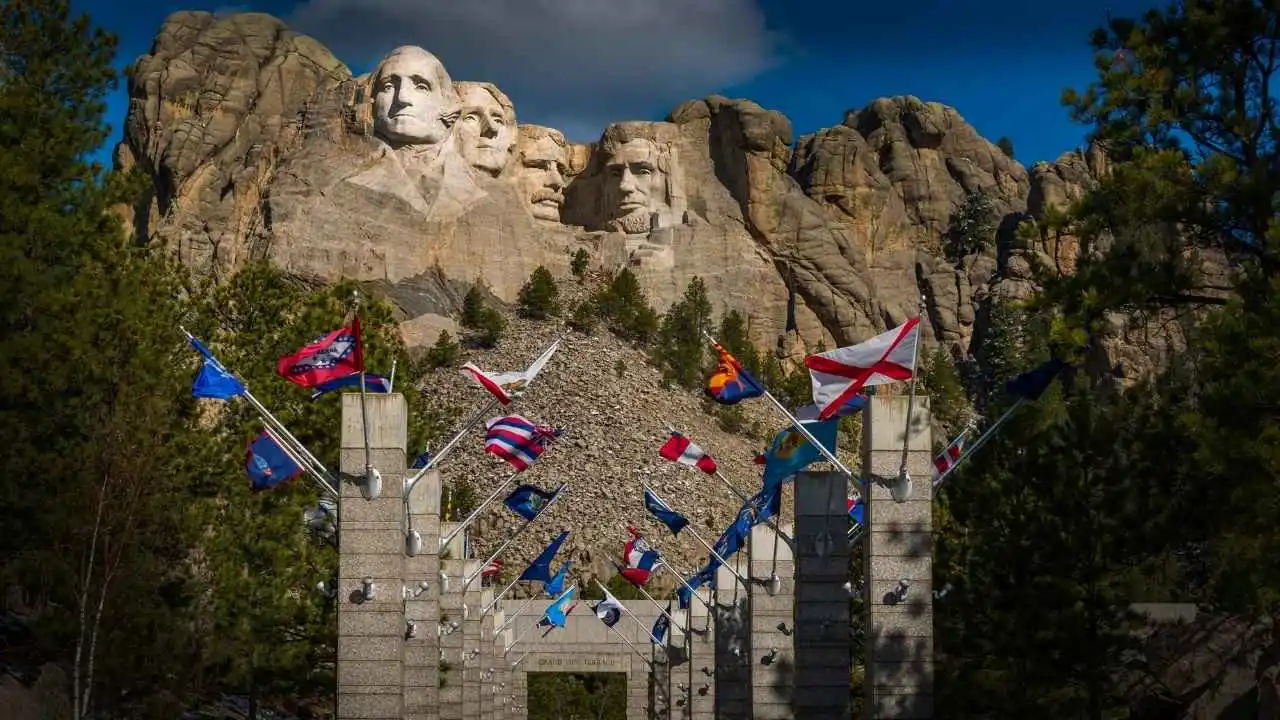
The legacy of Mount Rushmore in American history and culture is multifaceted, embodying themes of democracy, leadership, and national identity, while also being a source of controversy and debate. The future of the monument continues to be a topic of discussion, particularly regarding its cultural and historical implications.
Legacy of Mount Rushmore
- Symbol of American Ideals: Mount Rushmore is widely recognized as a symbol of American freedom and hope, representing four presidents who played pivotal roles in the nation’s history.
- Tourist Attraction: As one of the most visited landmarks in the United States, it has become an iconic image of American tourism, drawing millions of visitors each year.
- Cultural and Historical Reflection: The monument reflects the complexities of American history, including the achievements and controversies associated with the featured presidents and the nation’s expansion.
Controversies and Debates
- Native American Perspectives: The monument is located in the Black Hills, a region sacred to the Lakota Sioux and other Native American tribes. Its construction and presence on this land are viewed by many as a violation of sacred space and a symbol of broken treaties.
- Racial and Historical Reckoning: In recent years, there has been a heightened discussion about the representation of historical figures and events, with Mount Rushmore often cited in debates over monuments and racial justice.
Future of Mount Rushmore
- Preservation Efforts: Efforts to preserve and maintain the monument for future generations continue, with attention to both its cultural significance and the need for environmental stewardship.
- Educational Role: There is an increasing focus on using Mount Rushmore as a tool for education about American history, including the more controversial aspects of its legacy.
- Potential Changes: Discussions about the future of Mount Rushmore include debates over how to address the concerns of Native American communities and how to represent a more inclusive view of American history.
Ongoing Significance
- National and Global Icon: Mount Rushmore remains a powerful national and global icon, symbolizing both the ideals and the complexities of the United States.
- Reflection of Changing Attitudes: The monument continues to reflect changing attitudes towards history, culture, and national identity, serving as a barometer for broader societal discussions.




